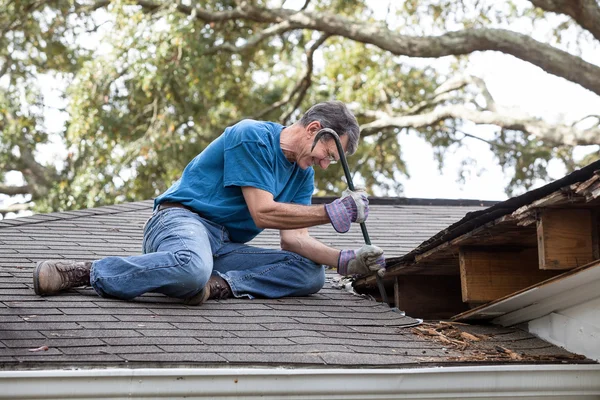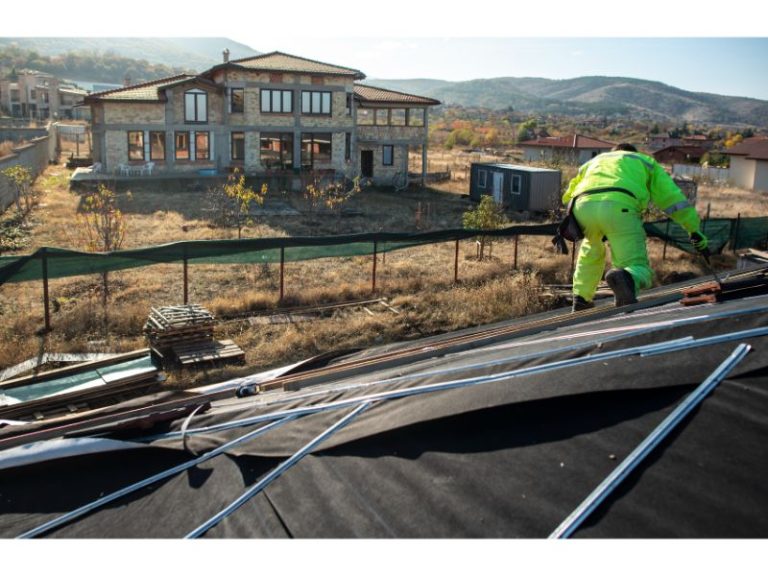Emergency Roof Rescue: 6 Essential Steps to Stop a Leak
Damage caused by storms or poor workmanship can result in water leaks that need immediate attention. Having the ability to manage these situations can save you money, time and stress.
Before hiring a roof contractor, consider these tips here to prevent structural issues, rising water bills, and health risks from mold due to neglected leaks. So, if you have a leak in your roof, here are some essential steps to follow:
1. Assess the Damage
Regardless of what kind of roof damage you’re facing its important to assess the situation carefully. This is a critical first step in protecting your home from further harm and determining how to proceed until professional help arrives.
The most obvious clue that something’s wrong is water stains or pooling on the ceiling or walls. But it’s not always easy to pinpoint where the leak is coming from. Water can travel along beams or rafters, so it might be entering the house from a spot far away from the troubled section of the roof.
If you suspect any structural damage, make sure that all rooftop workers have redundant fall protection in place before proceeding.
2. Identify the Source of the Leak
If water is seeping through your ceiling its important to track down where it’s coming from. This will help you save time and money on long-term repair costs.
Look for dark spots and rotted wood in your attic. Then, examine the roof joists and insulation with a flashlight. Check for holes and rotting around the area where the leak appeared in your ceiling. Look for areas that have penetrations such as vent pipes, chimneys, dormers and skylights.
If you’re having trouble tracking down the source use a garden hose to soak suspicious areas in your attic. Start at the lower section of your roof and move up one section at a time.
3. Collect Water
If you’re able, try to collect any water that’s leaking through the roof. This will help minimize any water damage that may occur inside your home until a professional can take care of it.
You can use buckets or other receptacles to collect the water. The more water that’s allowed to leak into your house the more damage it will cause. The location of the water escaping from your roof can tell you a lot about what’s causing it. For example, if you find water leaking from a wall on the upper floor of your house its probably due to a faulty roof system.
4. Contact a Roofing Contractor
When you discover that your roof has sprung an emergency leak the first thing you should do is contact a roofing contractor. Be wary of “storm chasers” who will try to swoop in and pressure you into signing a contract demanding a large down payment and then disappearing before the job is done.
While you wait for the roofer to arrive, try to limit damage inside your home. Use buckets to collect water and run a dehumidifier if needed. If it’s safe to do so, you can also move furniture and other belongings away from the area where water is leaking to prevent further damage.
5. Fix the Source of the Leak
The source of a leak can be challenging to identify and trace, particularly if the walls are wet. Luckily, there are several methods you can use to find the leak’s source. For example, if the water is coming from areas above your living spaces, look for spots where the outside light shines through.
This is a sign that you have an open roof vent or other exterior penetration that needs to be sealed. You can also try turning off all faucets in your home and then checking the water meter to see if it stops running. Conduct a visual inspection of any pipes in your basement or crawl space and listen for dripping sounds or hissing noises.
6. Recover from the Damage
In the event of an emergency roof leak, it is critical to take immediate steps to minimize water damage. This includes catching the water in buckets, securing tarps and running fans.
Moisture infiltrating the home creates a host of issues, from unsightly spots on the ceiling to mold that can be fatal. A residential roof leak can’t be delayed like a drippy faucet.
From an EMS standpoint, this incident is a medical rescue based on the NFPA 1670 standard. To this end, EMS personnel must quickly evaluate the patient to determine whether they require resuscitation on the roof. Once this is determined they must then ascend or descend (depending on the scenario) on a ladder, aerial lift or static rescue line.







